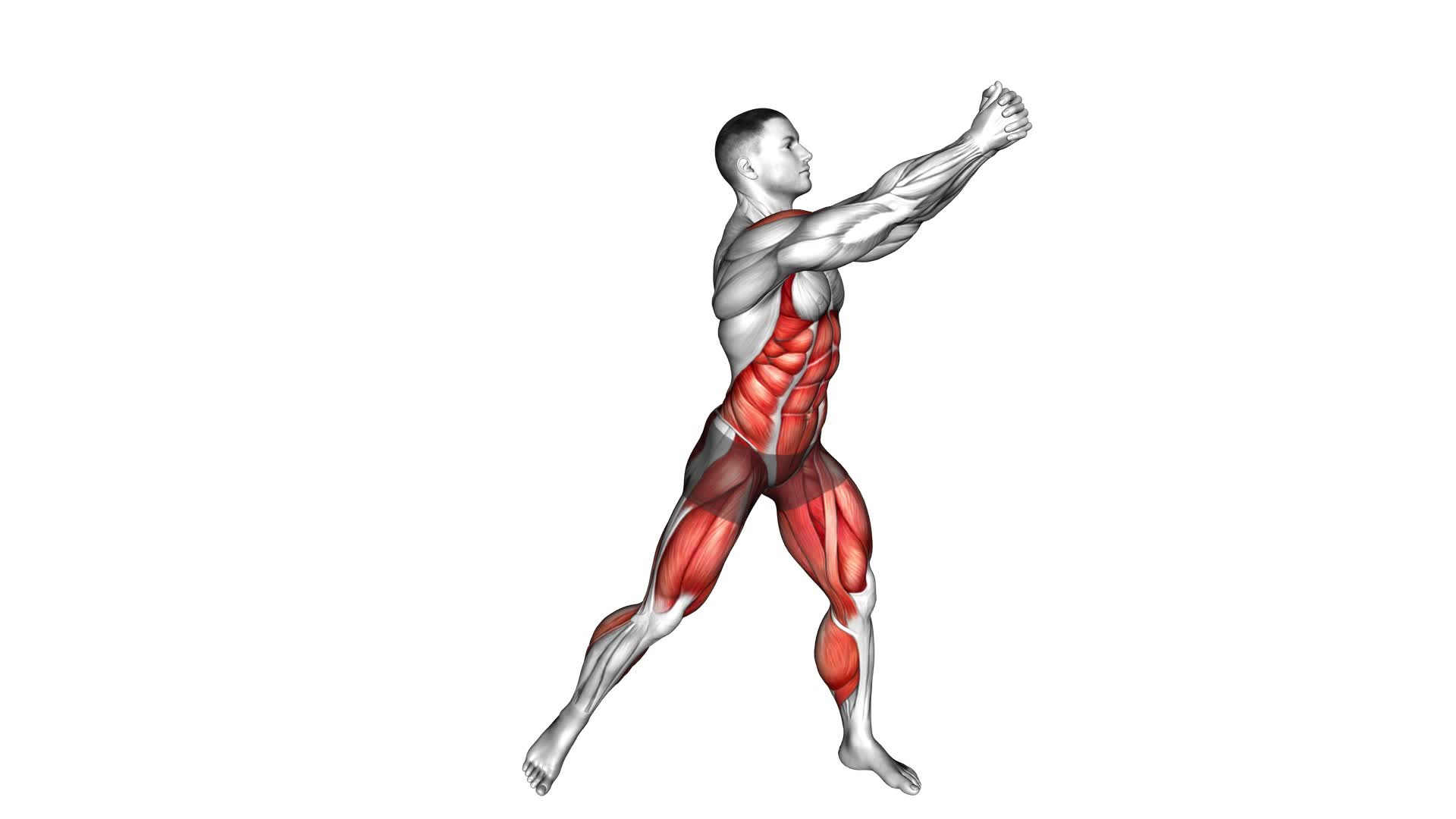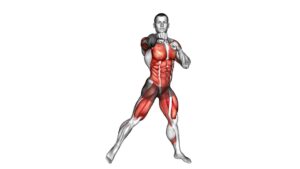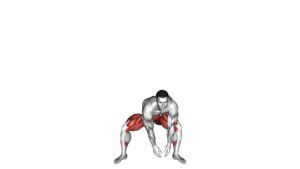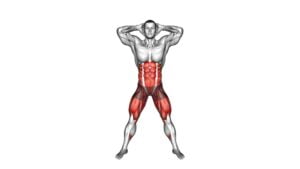Side-up Squat – Video Exercise Guide & Tips

Looking to tone your legs and strengthen your glutes? The side-up squat is the perfect exercise for you.
Watch This Exercise Video
In this video exercise guide, we'll show you the proper form and technique to maximize your results.
With variations to challenge your muscles and expert tips, you'll be able to incorporate the side-up squat into your workout routine with ease.
Get ready to feel the burn and achieve your fitness goals!
Key Takeaways
- The side-up squat strengthens glutes and thighs, targets inner thigh muscles, enhances stability and balance, and helps prevent injuries.
- Proper form and technique for the side-up squat include standing with feet shoulder-width apart, engaging the core and keeping the back straight, lowering the body by bending the knees and pushing the hips back, lifting one leg out to the side while squatting, and pushing through the heels to return to the starting position.
- Common mistakes to avoid during the side-up squat include rounding the back, letting the knees collapse inward, not going low enough in the squat, and not maintaining proper form and control. If unable to perform the side-up squat, alternative exercises can be tried.
- Variations to challenge the muscles during the side-up squat include adding weights for increased resistance, performing single-leg side-up squats, using resistance bands for extra resistance, using a stability ball against a wall for support, and trying different equipment options for added intensity.
Benefits of the Side-up Squat
One key benefit of the side-up squat is that it strengthens your glutes and thighs, helping you to build a stronger lower body. This exercise is highly effective in improving balance and targeting the inner thigh muscles.
When you perform the side-up squat, you engage your gluteus maximus and quadriceps muscles, which are responsible for extending your hips and knees. By strengthening these muscles, you not only build a more aesthetically pleasing lower body, but you also enhance your overall stability and balance.
Additionally, the side-up squat specifically targets the inner thigh muscles, known as the adductors. These muscles play a crucial role in stabilizing your hips and maintaining proper alignment during movements. Strengthening the adductors can help prevent injuries and improve your performance in activities that require lateral movements, such as sports and dance.
To perform the side-up squat, start by standing with your feet shoulder-width apart. Take a step to the side, keeping your toes pointing forward. Lower your body into a squat position, ensuring that your knees stay in line with your toes. Push through your heels to return to the starting position.
Incorporating side-up squats into your workout routine can provide significant benefits for your lower body strength, balance, and inner thigh muscles.
Proper Form and Technique
To perform the side-up squat with proper form and technique, follow these steps:
- Stand with your feet shoulder-width apart and your toes pointing slightly outward.
- Engage your core and keep your back straight throughout the exercise.
- Lower your body by bending your knees and pushing your hips back, as if you're sitting back into a chair.
- As you lower down into the squat, lift one leg out to the side, keeping it straight.
- Pause briefly at the bottom of the squat, then push through your heels to return to the starting position.
- Repeat the movement on the other side, alternating legs with each repetition.
Common mistakes to avoid include rounding your back, letting your knees collapse inward, and not going low enough in the squat. Make sure to maintain proper form and control throughout the exercise.
If you're unable to perform the side-up squat, there are alternative exercises you can try. These include lateral lunges, side leg raises, and clamshells. These exercises target similar muscles and can help improve your strength and stability.
Variations to Challenge Your Muscles
If you want to challenge your muscles further, consider trying different variations of the side-up squat. There are advanced modifications and equipment options that can add intensity to your workout.
For advanced modifications, you can try adding weights to increase resistance. Holding dumbbells or using a barbell across your shoulders will engage your muscles even more during the exercise.
Another variation is the single-leg side-up squat, where you perform the squat on one leg while keeping the other leg lifted off the ground. This variation requires more balance and stability, making it a challenging option.
When it comes to equipment options, you can use a resistance band to add extra resistance to the side-up squat. Place the band around your thighs or ankles to provide resistance as you perform the exercise.
Another option is using a stability ball against a wall. Lean against the stability ball with your side and perform the squat, using the ball for support and stability.
Tips for Maximizing Your Results
To maximize your results, incorporate these three key tips into your side-up squat routine.
First, avoid common mistakes such as leaning forward or rounding your back. These errors can put unnecessary strain on your lower back and decrease the effectiveness of the exercise. Instead, keep your chest up and maintain a neutral spine throughout the movement.
Second, focus on the recommended sets and reps for optimal results. Start with 2-3 sets of 10-12 reps and gradually increase the intensity as you get stronger. Remember to listen to your body and adjust the weight accordingly. It's better to perform the exercise with proper form and lighter weight than to sacrifice form for heavier weight.
Lastly, pay attention to your breathing. Inhale as you lower your body and exhale as you push back up. This helps stabilize your core and provides additional support during the exercise.
Incorporating the Side-Up Squat Into Your Workout Routine
To incorporate the side-up squat into your workout routine, you can continue building on the tips mentioned earlier for maximizing your results. Here are four key strategies to help you get the most out of this exercise:
- Increasing squat depth: To challenge your muscles and improve your squat technique, gradually increase the depth of your squat as you become more comfortable. Start by squatting to parallel, then aim to go deeper over time. Deepening your squat engages more muscles and helps you develop better lower body strength.
- Adding resistance: Once you have mastered the side-up squat without any added weight, you can start incorporating resistance to further enhance your workout. Hold a dumbbell or kettlebell at your chest or use a resistance band around your thighs to increase the difficulty. Adding resistance will help build muscle and make the exercise more effective.
- Varying foot placement: Experiment with different foot positions to target different muscles. Try a wider stance to engage your glutes and inner thighs, or a narrower stance to focus on your quads. Play around with foot angles, such as pointing your toes outwards or inwards, to activate different muscle groups and prevent boredom.
- Incorporating plyometric variations: Once you have mastered the basic side-up squat, you can take it up a notch by incorporating plyometric variations. Jump squats or lateral jumps are great options to add explosive power and boost your cardiovascular fitness.
Frequently Asked Questions
Are There Any Specific Warm-Up Exercises That Should Be Done Before Attempting the Side-Up Squat?
Before attempting the side-up squat, it's important to warm up properly. Incorporating specific warm-up exercises can help prepare your body for the movement.
These exercises can include hip stretches, glute activations, and ankle mobility drills. By warming up properly, you can increase blood flow to the muscles, improve range of motion, and reduce the risk of injury.
Can the Side-Up Squat Be Modified for Individuals With Knee or Hip Injuries?
Modifying the side-up squat for knee or hip injuries is possible. There are variations that can alleviate strain on those areas. By adjusting the depth of the squat or using a support, you can still reap the benefits of this exercise without exacerbating any existing issues.
The side-up squat is particularly effective for building overall leg strength. It targets the glutes, quads, and hamstrings, helping to improve stability and balance.
How Many Sets and Repetitions Should Be Done When Incorporating the Side-Up Squat Into a Workout Routine?
When incorporating the side-up squat into your workout routine, it's important to consider the number of sets and repetitions. To maximize the benefits of this exercise, aim for 3-4 sets of 8-12 repetitions. This will help to build strength and endurance in your lower body muscles.
Remember to always maintain proper form and technique during side-up squats. Keep your back straight, chest up, and knees aligned with your toes. Engage your core and push through your heels as you perform the movement.
Is It Necessary to Use Weights While Performing the Side-Up Squat, or Can It Be Done Solely With Bodyweight?
When it comes to the side-up squat, you might be wondering if you need to use weights or if bodyweight alone will suffice. Well, the good news is that you can do it with just your bodyweight!
This exercise targets your glutes, thighs, and core, helping to strengthen and tone those areas.
Plus, using your own bodyweight adds an extra challenge and can improve your overall stability and balance.
Can the Side-Up Squat Be Used as a Standalone Exercise, or Is It More Effective When Combined With Other Exercises?
The side-up squat can absolutely be used as a standalone exercise. It targets multiple muscle groups and improves balance and stability.
However, for maximum effectiveness, it's recommended to combine it with other exercises that target different areas of the body. This will provide a well-rounded workout and help you achieve your fitness goals more efficiently.
Remember to consult with a fitness professional to design a personalized exercise routine that suits your needs and abilities.
Conclusion
Incorporating the side-up squat into your workout routine can offer numerous benefits, including improved lower body strength and stability. By maintaining proper form and technique, you can maximize the effectiveness of this exercise.
Additionally, exploring variations of the side-up squat can challenge your muscles in new ways. Remember to listen to your body and adjust the difficulty level as needed.
With consistent practice, you can achieve great results and enhance your overall fitness.

Author
Years ago, the spark of my life’s passion ignited in my mind the moment I stepped into the local gym for the first time. The inaugural bead of perspiration, the initial endeavor, the very first surge of endorphins, and a sense of pride that washed over me post-workout marked the beginning of my deep-seated interest in strength sports, fitness, and sports nutrition. This very curiosity blossomed rapidly into a profound fascination, propelling me to earn a Master’s degree in Physical Education from the Academy of Physical Education in Krakow, followed by a Sports Manager diploma from the Jagiellonian University. My journey of growth led me to gain more specialized qualifications, such as being a certified personal trainer with a focus on sports dietetics, a lifeguard, and an instructor for wellness and corrective gymnastics. Theoretical knowledge paired seamlessly with practical experience, reinforcing my belief that the transformation of individuals under my guidance was also a reflection of my personal growth. This belief holds true even today. Each day, I strive to push the boundaries and explore new realms. These realms gently elevate me to greater heights. The unique combination of passion for my field and the continuous quest for growth fuels my drive to break new ground.



